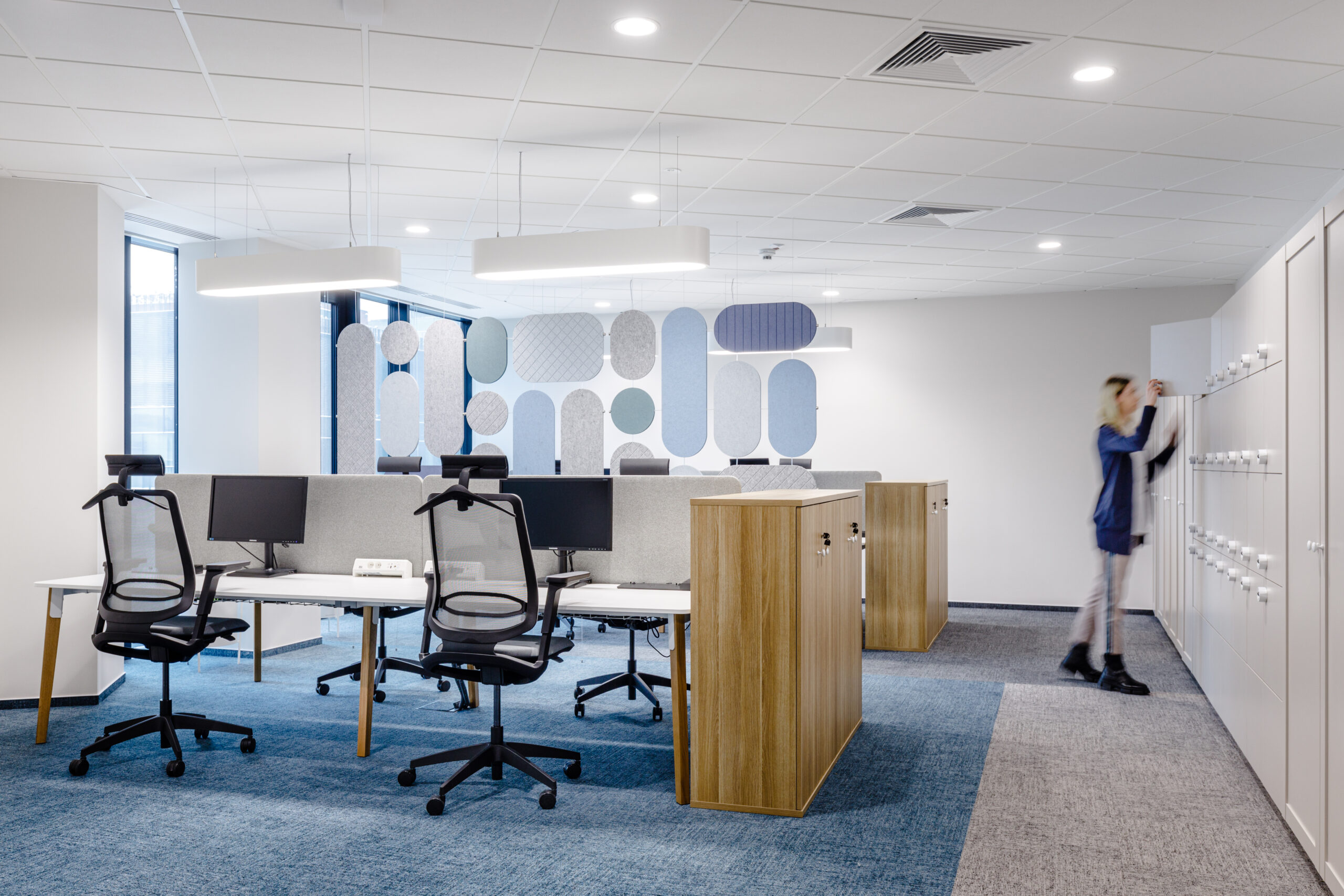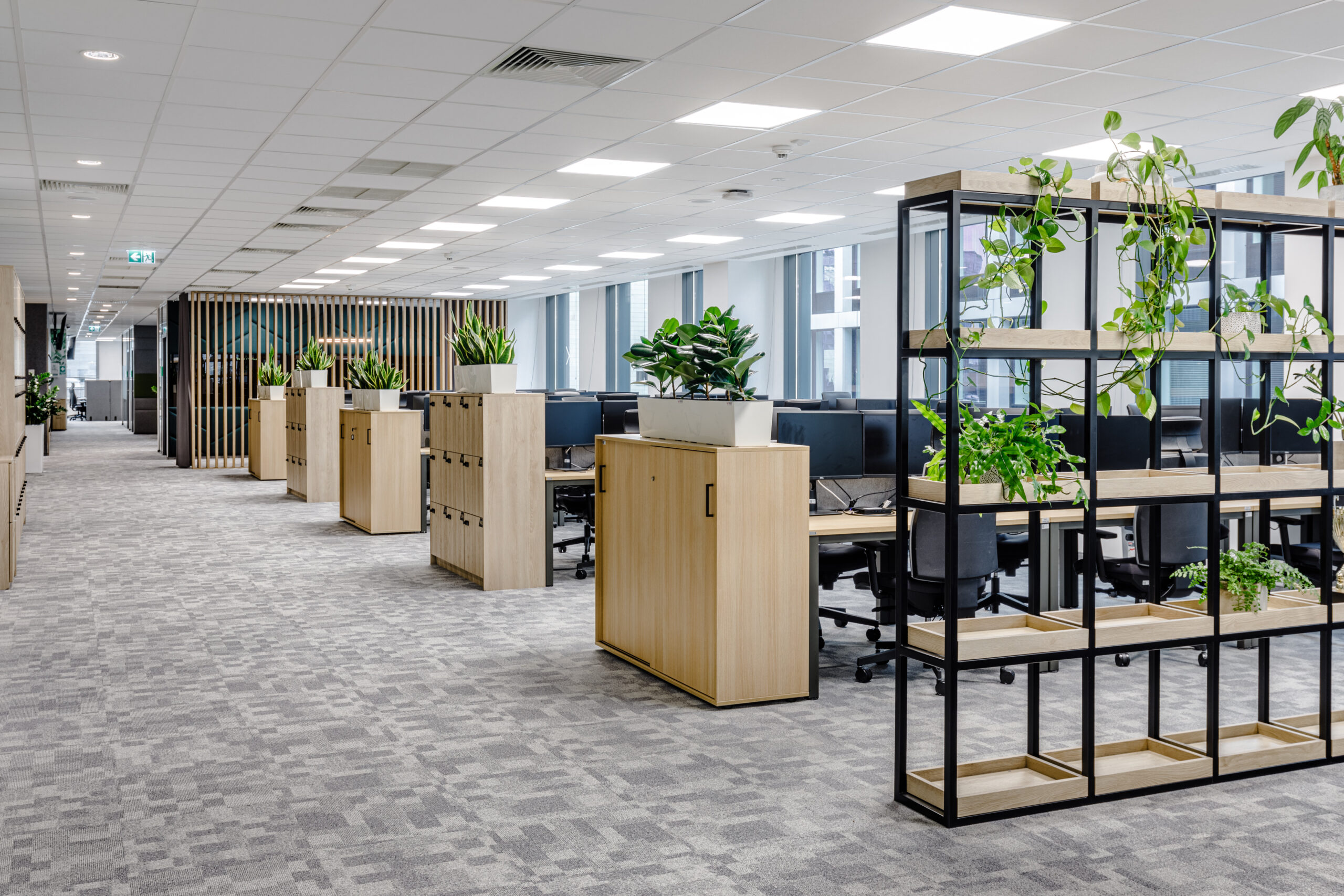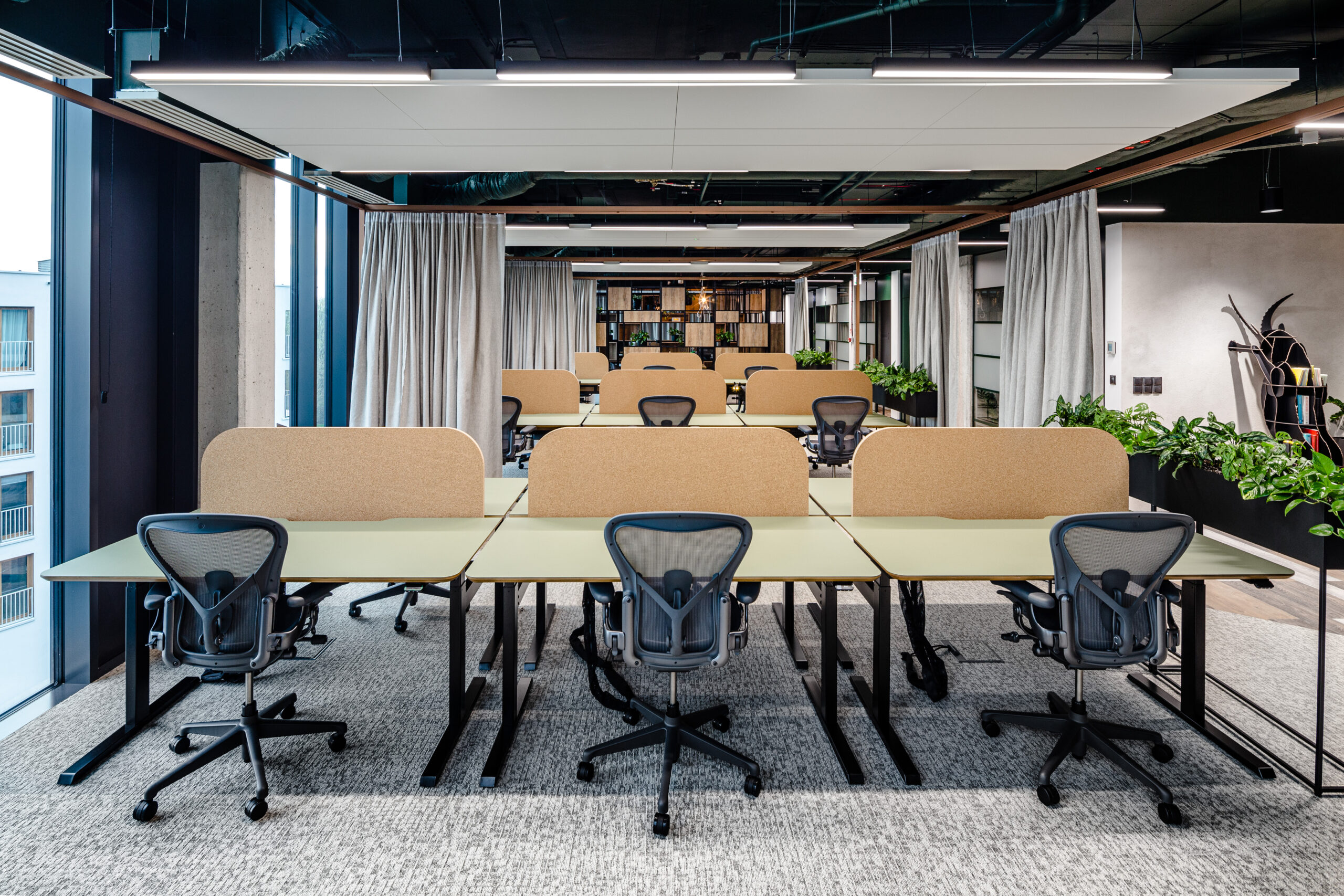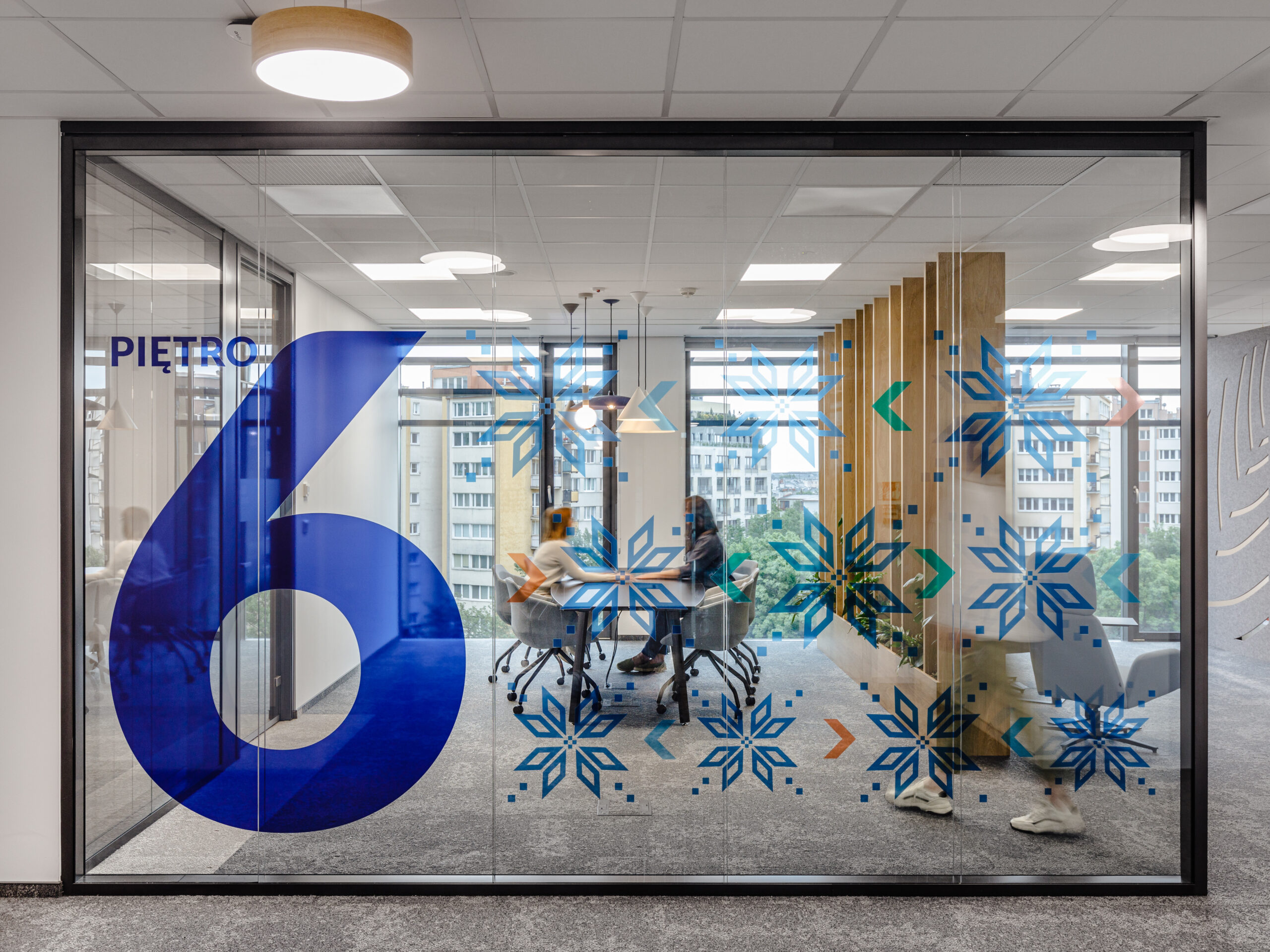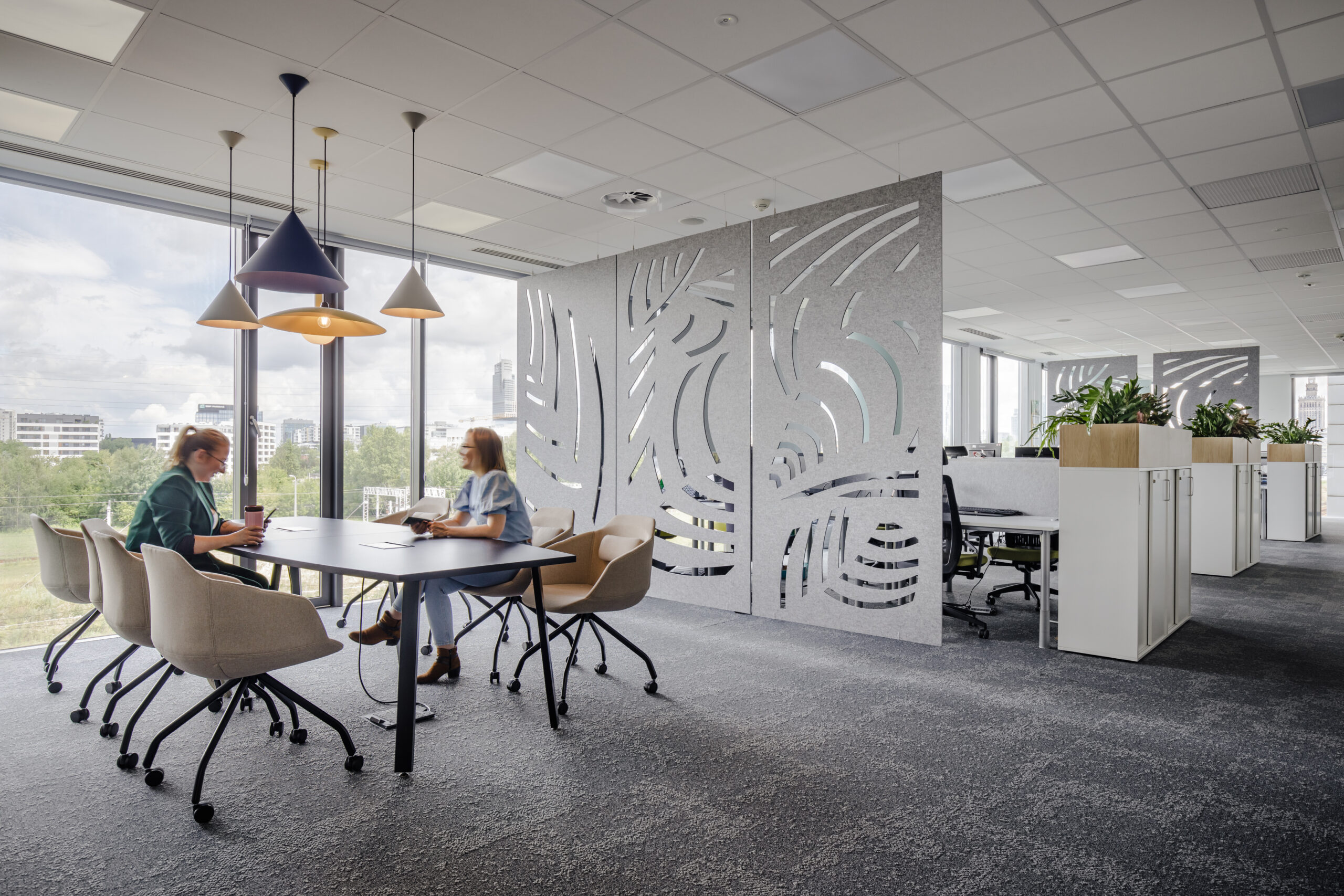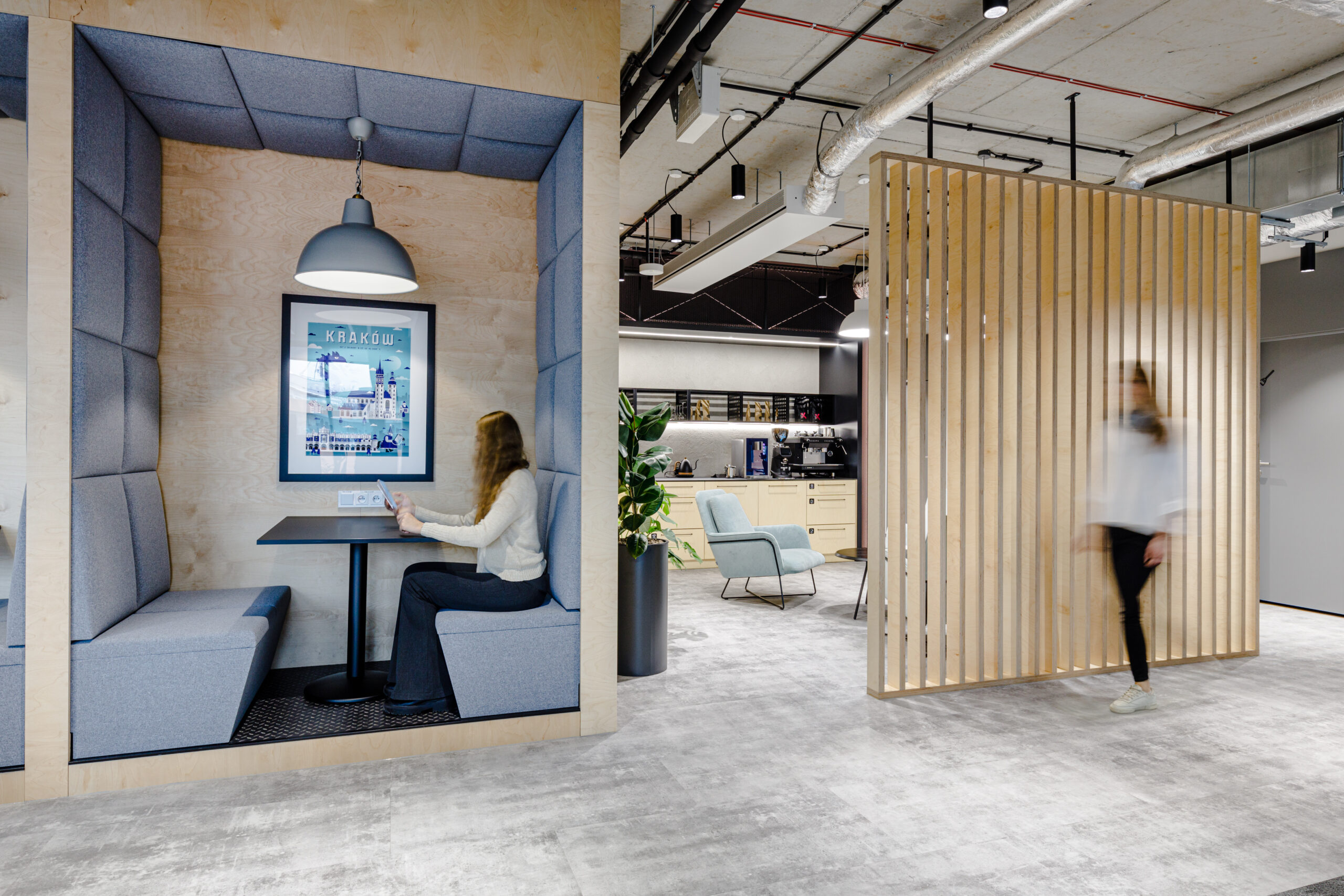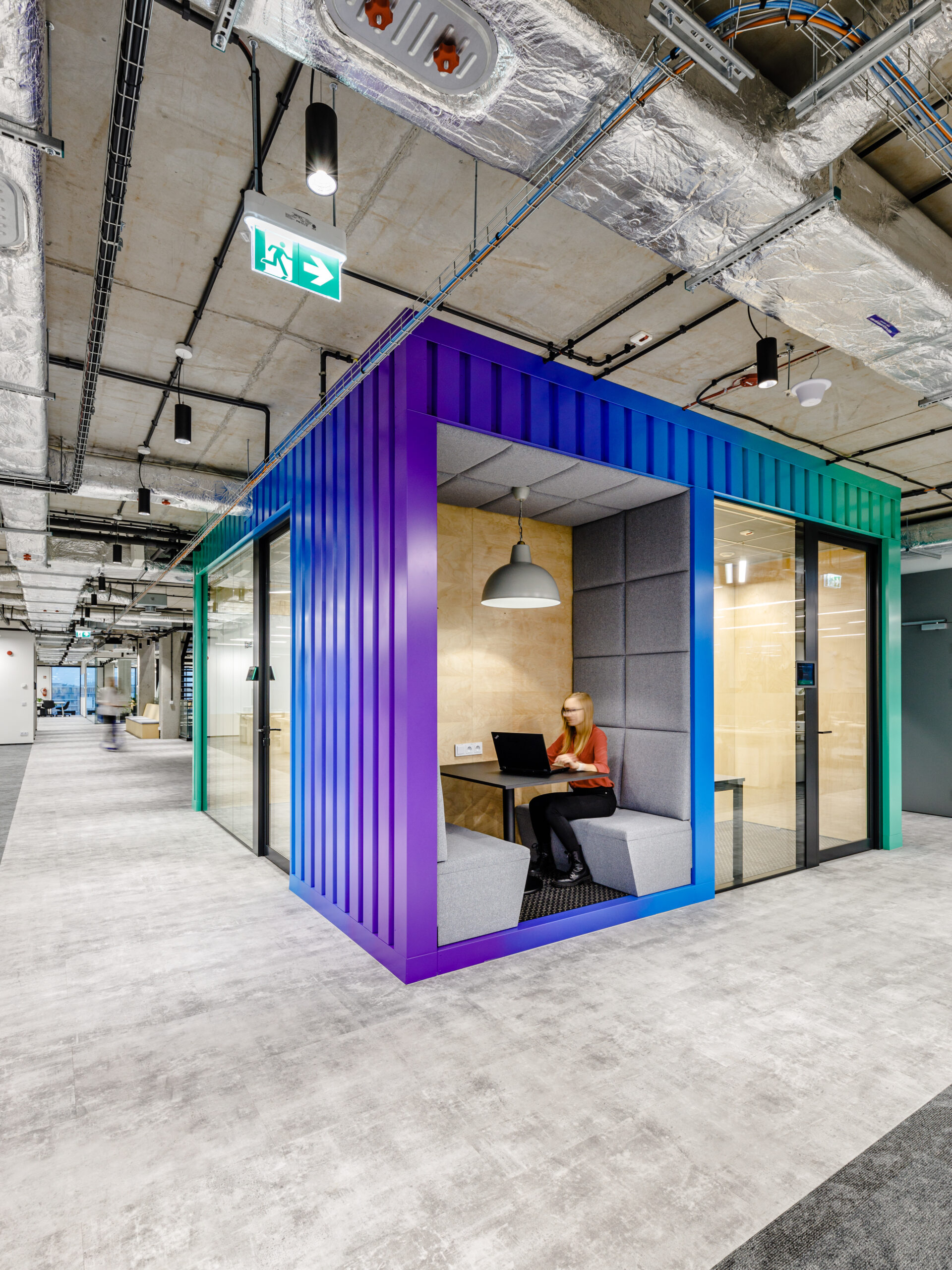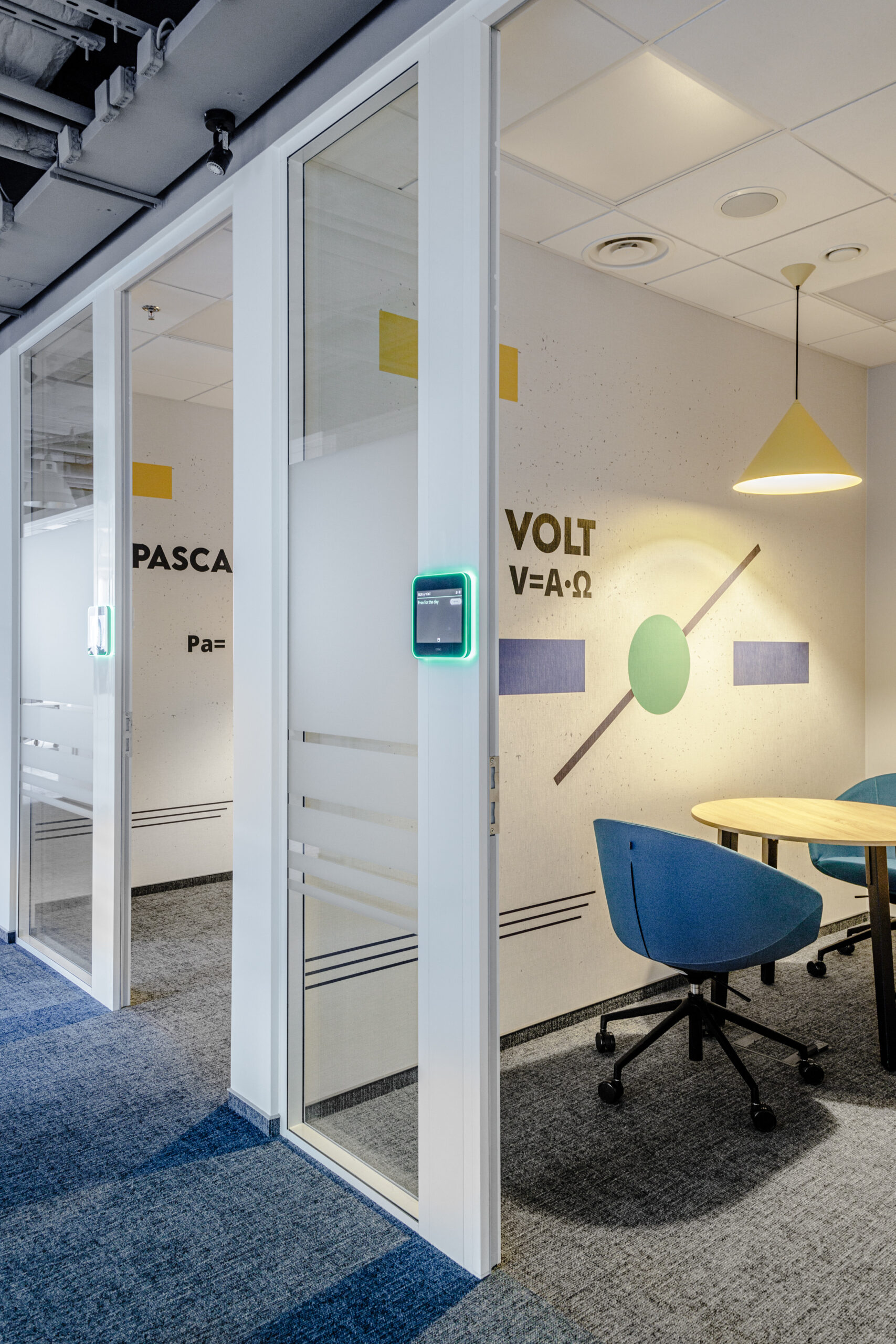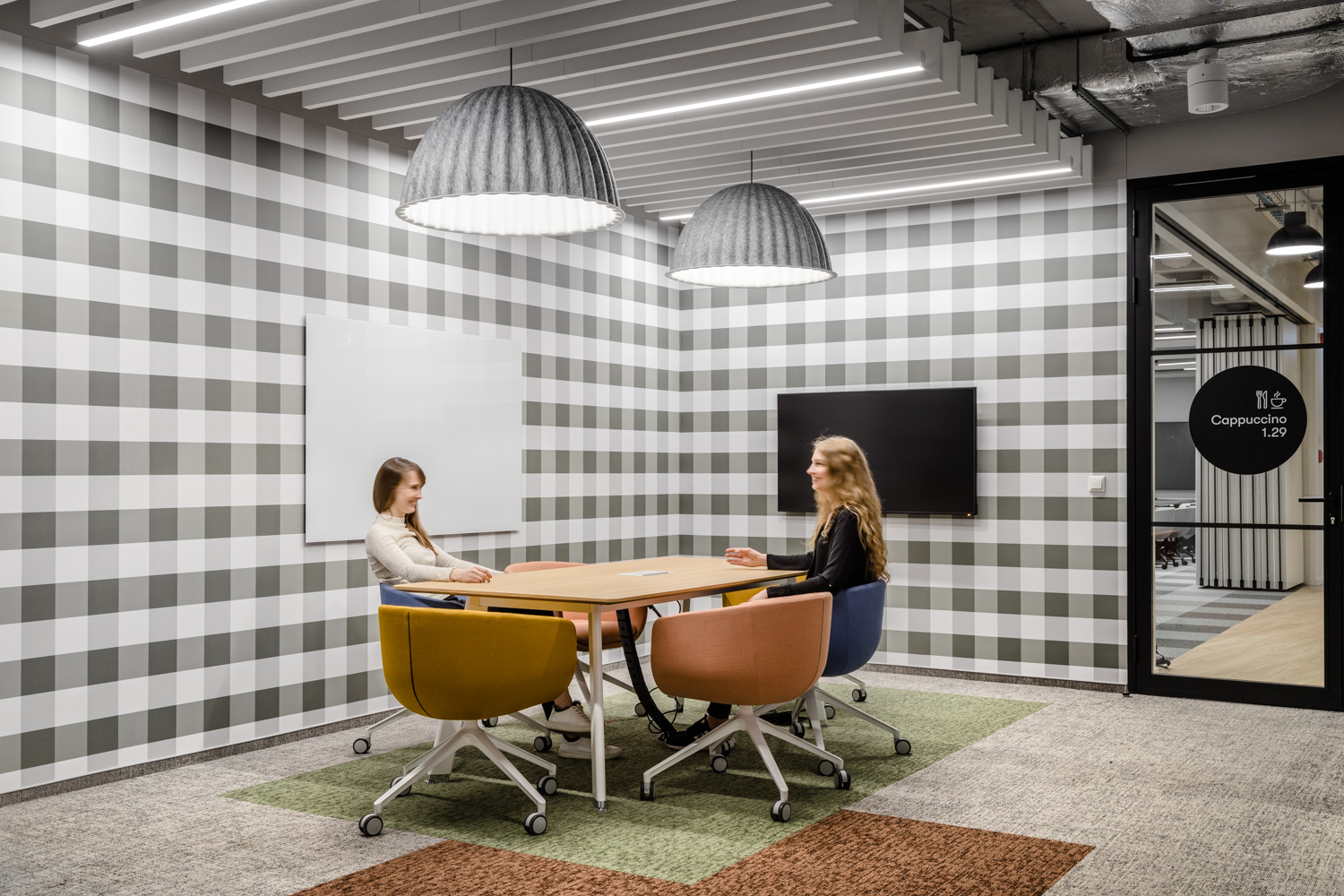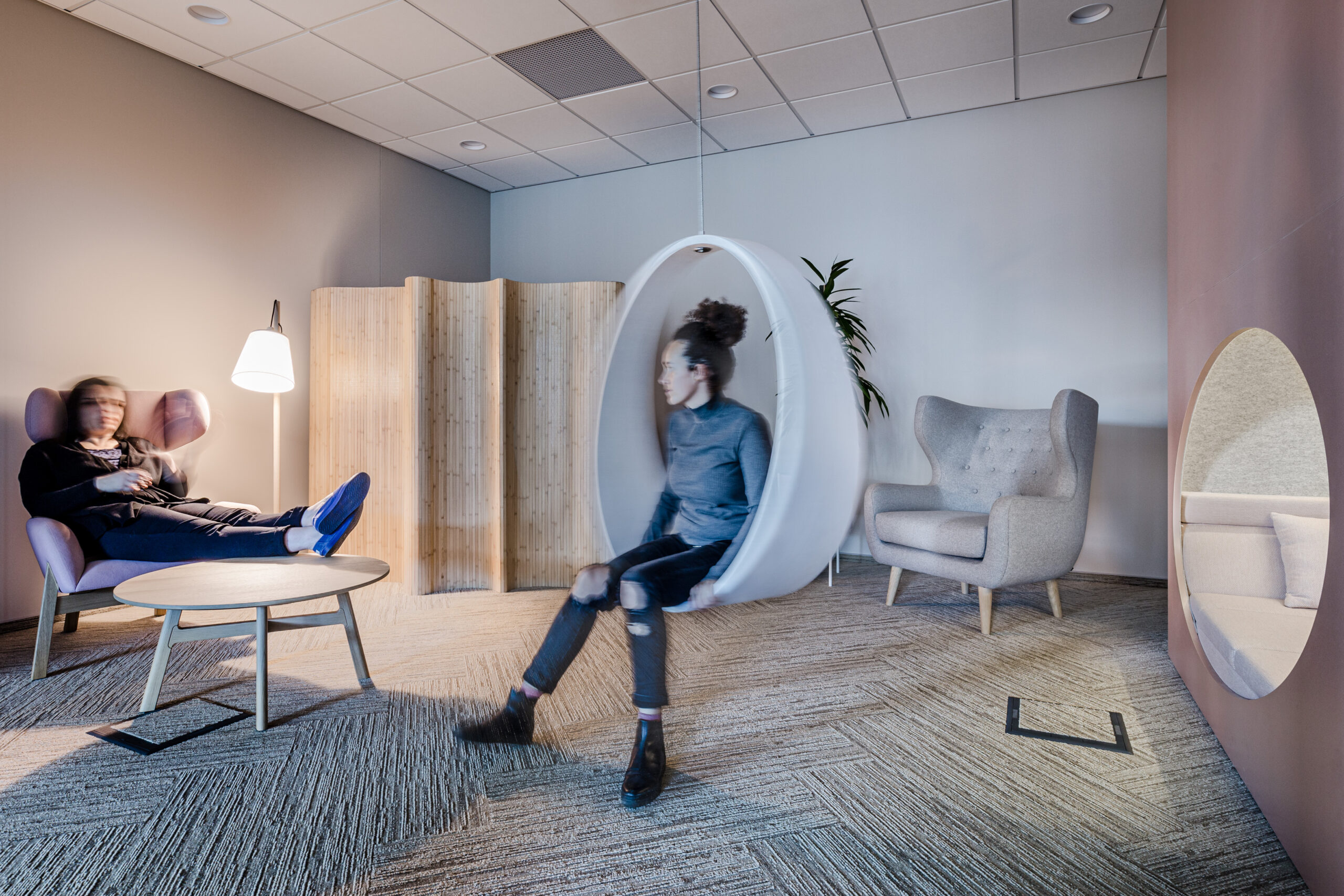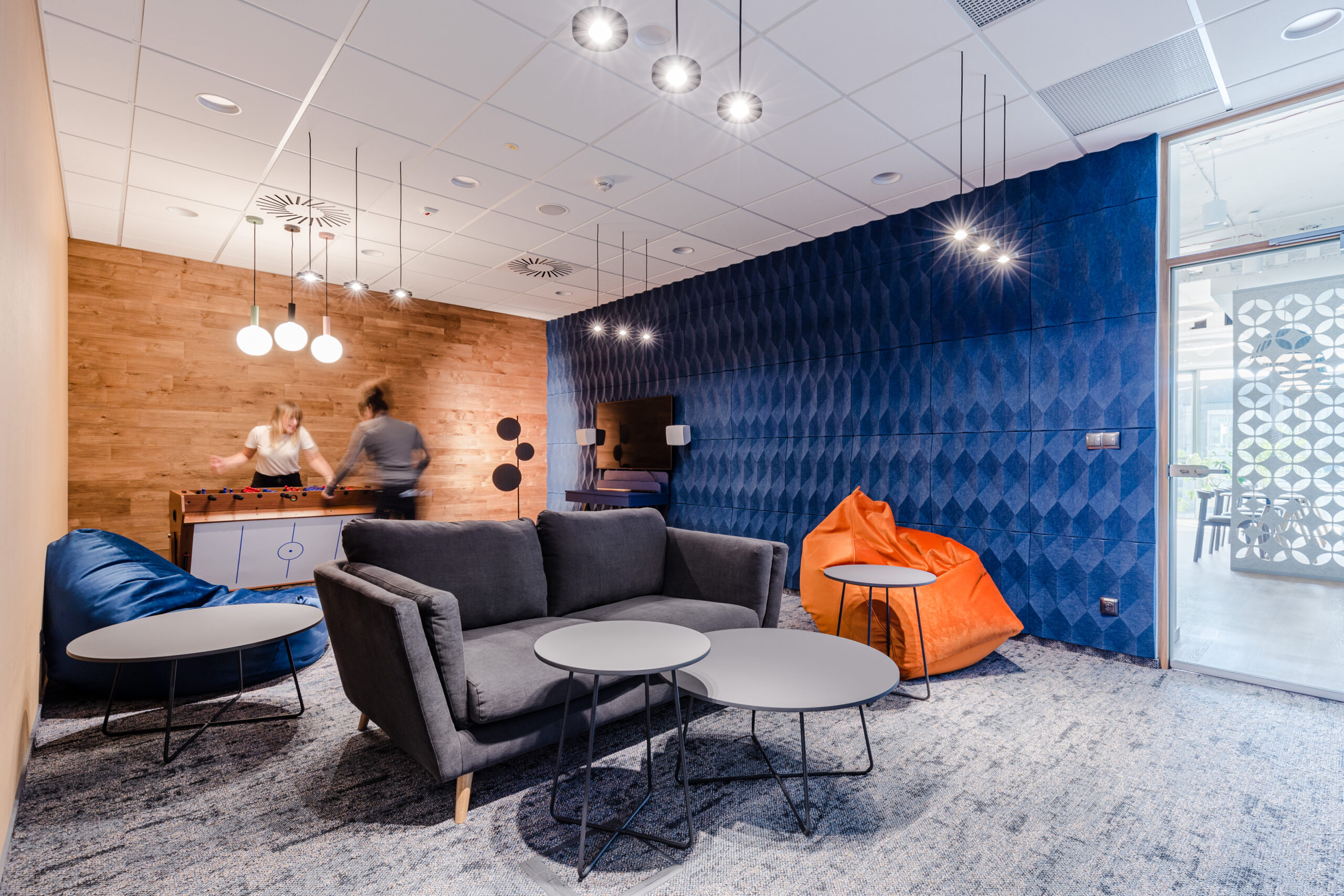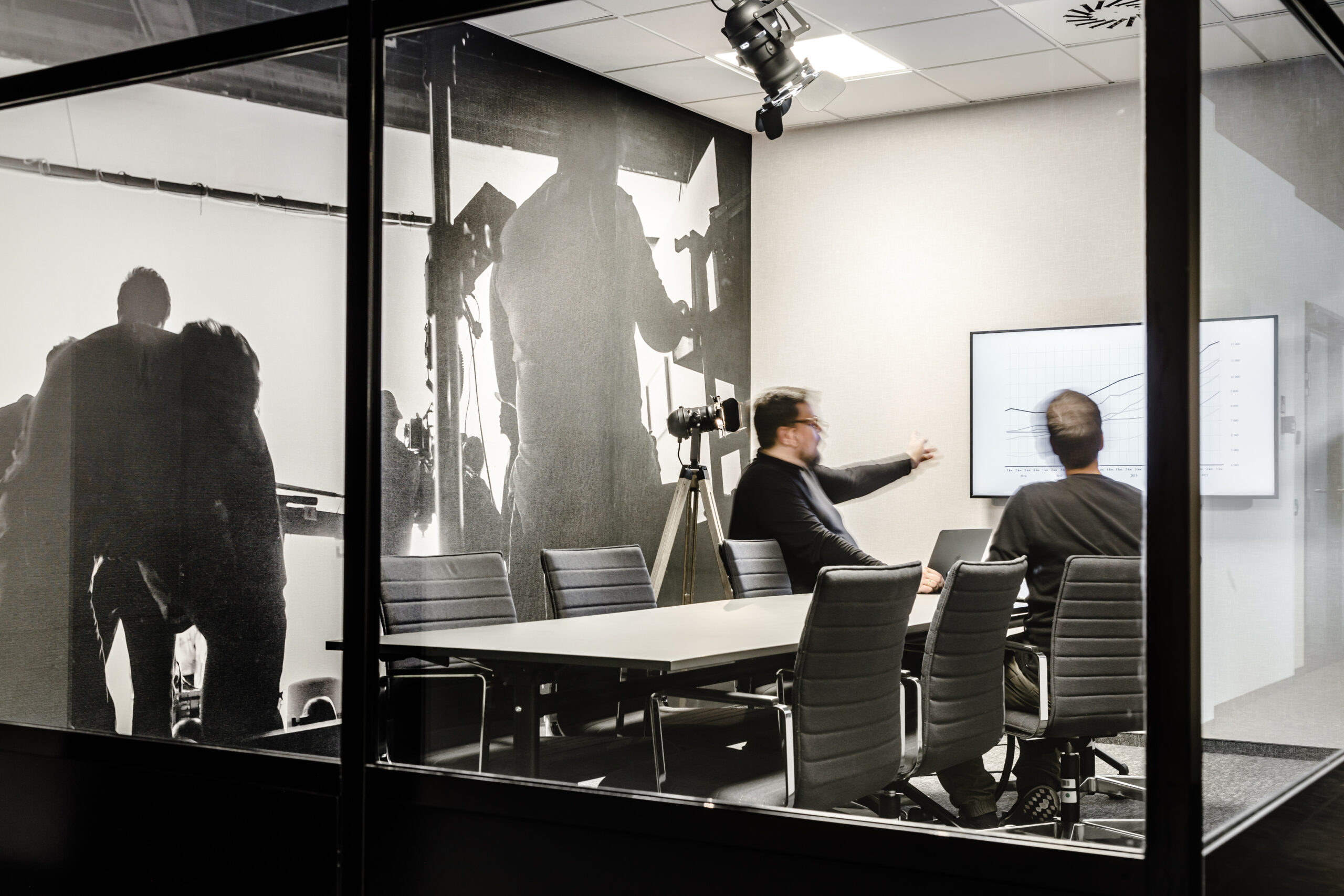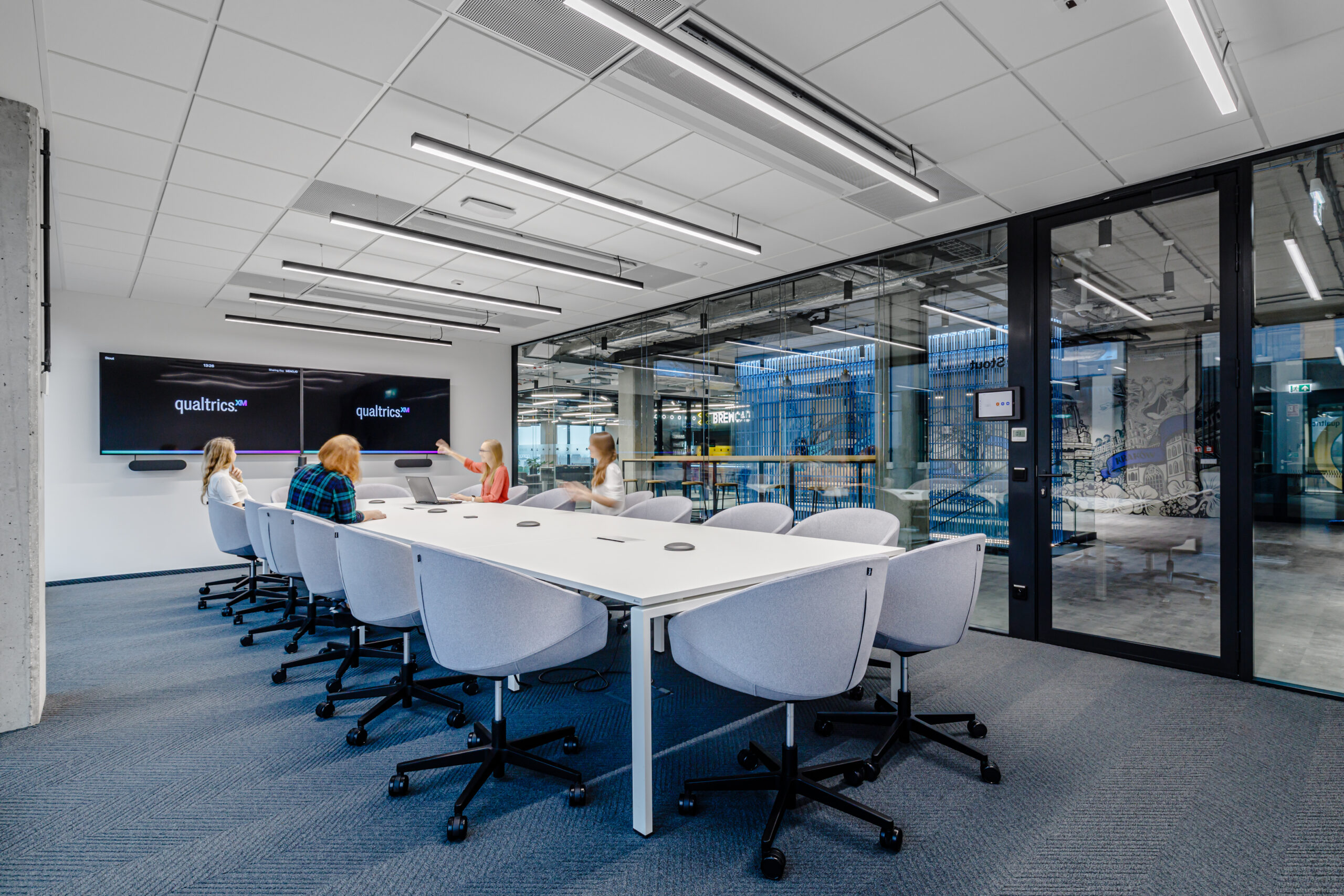Activity-based workplace. What is it and how to implement it?
Until a dozen years ago, office technologies such as desktop computers and telephones made it virtually impossible for employees to perform most tasks away from their desks. Equipping offices with wi-fi, and employees with laptops and mobile phones, has paved the way for getting work done where it is most effective. The new, more mobile work styles have been called new ways of working, and offices tailored to the needs of digital nomads have been called activity-based workplaces.
What is an activity-based workplace?
Activity-based workplace does not only meet the needs of professionals who use mobile technologies in their work, but also offers the possibility of more efficient use of space and better organization of work.
Imagine an open space in which there are 20 professionals sitting, doing work solely at their desks. At the same time, a few people are making phone calls, a few are participating in video conferences, someone at the desk is discussing a currently prepared presentation with a colleague, a conversation is brewing between a few people about the last big deal in the market, and the rest are trying to work in concentration on contracts, bids, expense statements in an Excel spreadsheet. It is not hard to imagine that working in this space is strenuous for most of the people in it. After a full day they feel exhausted, some complain of headaches. Professionals working in such conditions make mistakes more often, as it is difficult for them to focus on their tasks.
Until recently, this is how most offices were organized. The advent of mobile technology has made it possible to arrange the space and work in a different way than in the example above. In offices organized according to the principles of activity-based working, employees choose where and when to perform their assigned duties in order to work as efficiently as possible.
The lack of desk assignments, multiple shared, multifunctional spaces suitable for different types of tasks, and the removal of physical barriers between teams give employees the freedom of choice and increase their level of satisfaction with their work environment. In an activity-based office, employees are also more productive, their well-being increases and they complain less about migraines. Moving around the office and using different zones also positively affects their creativity.
Of the 20 professionals in the example above, in an activity-based office, only a few would work in the open space. Those making phone calls or video conferencing would go to mobile booths and small rooms. Employees discussing a presentation would meet in a conference room, where they could conveniently project the material on a screen and talk freely without disturbing others. People working on individual tasks, depending on their preference and the complexity of the tasks at hand, would either work in an open space or go to a so-called “quiet zone” with rules that promote focused work. The activity-based workplace allows different tasks to be performed in areas appropriately designed for this purpose.
Activity-based workplace – practical tips
When designing space in the activity-based workplace model, it is advisable to ensure a variety of workspaces and adapt them to the working styles of teams.
What modules are used to design such offices?
1. Open space
Open spaces should be arranged in an intimate way. It is a good idea to provide quiet zones and interaction areas where rules are different. In this way, people from analytical teams, working individually in a focused manner, are not disturbed by those whose work requires interaction on the fly, asking questions and verifying various issues with colleagues.
Examples of open space zones in Colliers Define projects:
2. Touchdown spaces
In the era of hybrid work, many people come to the office mainly for meetings, but in between they often have to answer urgent emails. It is useful to provide them with places where they can sit for a while – tables where they can work on their computers for a short time between other tasks.
Examples of touchdown spaces in Colliers Define projects:
3. Quiet zones
In a survey conducted for Skanska, the strongest relationship between statements about the office and its frequency of use was observed when assessing the extent to which the office allows respondents to work effectively. Open space zones arranged in an intimate manner, with desks grouped in islands of 4-6 desks each, additionally separated from the passageway by cabinets for personal belongings or mobile booths and panels, are conducive to effective individual work.
It is good practice to designate zones in the office with rules that promote focused work: muted device sounds, no phone or video conferencing. In addition, creating a room for quiet work, with rules similar to those in a library, will also help users perform tasks more efficiently. Providing a variety of zones and adequate equipment such as additional monitors in them is worthwhile.
Examples of quiet zones in Colliers Define projects:
4. Cabinets for rent
In the era of hybrid work, in activity-based offices not only desks can be shared, but also cabinets. Managers’ work often requires confidential conversations both in person and mediated by a phone or computer. Therefore, when they come to the office, they tend to occupy conference rooms. It is a good idea to provide cabinets available to managers through a reservation system equipped with a desk with a monitor, as well as a small table for meetings.
Examples of cabinets for rent in Colliers Define projects:
5. Collaborative spaces
Activity-based workplace includes areas that support various types of tasks carried out by teams working together. Collaborative spaces will provide conventional conference rooms, as well as workshop spaces that can be easily rearranged according to needs, or zones such as agoras that encourage knowledge sharing in teams and task coordination. It is good practice to design these spaces to be multifunctional. This allows for efficient space management and better adaptation to needs.
Examples of collaborative spaces in Colliers Define projects:
6. Relaxation zones
The office should not only support activities related to the completion of specific individual tasks and provide zones such as open space, focus rooms and quiet work areas, or zones for planned collaboration including workshop meetings and brainstorming. They should also include a space for holding informal meetings, chatting over coffee, or relaxing. To ensure that hybrid work requiring intensive communication is effective, the daily schedule should anticipate short breaks, and the space must be arranged to offer zones in which one can recover.
Examples of relaxation zones in Colliers Define projects:
7. Support areas
Activity-based workplace also provides a variety of support spaces for printing materials or scanning them, as well as conveniently preparing documentation. The hybrid model’s support areas also include meeting rooms with higher acoustic standards, arranged in such a way that allows users to comfortably record a short video for internal communication, take part in a video conference or conduct online training.
Examples of support areas in Colliers Define projects:
What are the benefits of an activity based workplace?
A properly organized activity-based workplace has many advantages that translate into benefits for both the organization and the users of such a space.
Employees can occupy the area that best suits their needs at any given time. If they have trouble concentrating they can leave the distracting environment and find a work zone that promotes focus. This increases their productivity and efficiency, as well as their job satisfaction.
The fact that employees are not assigned to specific desks and can work in different locations as desired gives them the opportunity to meet people from other departments and establish new relationships within their own organization. Freedom of movement around the office also encourages teamwork and creativity. Individuals from different departments can easily communicate with each other, arrange a place to work together and exchange ideas. All this contributes to better cooperation between people.
Activity-based workplace creates conditions for performing tasks on one’s own terms – according to one’s work style and individual needs. The flexibility of the workplace significantly affects job fulfillment, increasing employee satisfaction. In addition, the organization of space in an activity-based layout contributes to the reduction of noise in the office and positively influences the well-being of the people working in it.
The ability to make choices about the way work is performed is now one of the most important factors that employees or potential employees of an organization look at. Creating an activity-based workplace can help attract and retain top talent.
Activity-based workplace is an opportunity for organizations to improve the efficiency of their space by optimizing the office layout and increasing the effectiveness of its use. It is also worth mentioning that this arrangement of the office works in tandem with hybrid models to meet the needs of teams that come to the office to integrate, exchange information or work together on projects.
How to effectively carry out the process of implementing an activity-based workplace model?
In the era of hybrid work, organizing the office according to the principles of activity-based working can significantly improve the functioning of the organization. The rearrangement of space should be introduced in a thoughtful manner and preceded by research.
The best way to prepare users for utilizing an activity-based wokplace is to involve employees in the process from the very beginning. First, explain the reason for the change and the results that will be achieved. Secondly, it is useful to listen to employees’ needs and concerns and take them into account during the decision-making process.
The next step should be to explain how the new office layout will work and the purpose of each zone. It is also necessary to tell users how to use the various functionalities to make their work easier. The Colliers Define team has the expertise to help at every stage of an office space transformation.

